The online conversation about the Republic of Moldova in the Romanian digital space has a strongly polarized structure, clearly shaped by geopolitical factors.
This is the main conclusion of an analysis carried out using data from NewsVibe, an AI-powered media monitoring platform, which collected and processed information from over 11,600 online mentions in the past month. The analysis shows that, beyond an overall neutral tone, the discussion is structured along two dimensions: a pro-European one, portrayed positively, and another related to Russia’s influence, marked by deeply negative connotations.
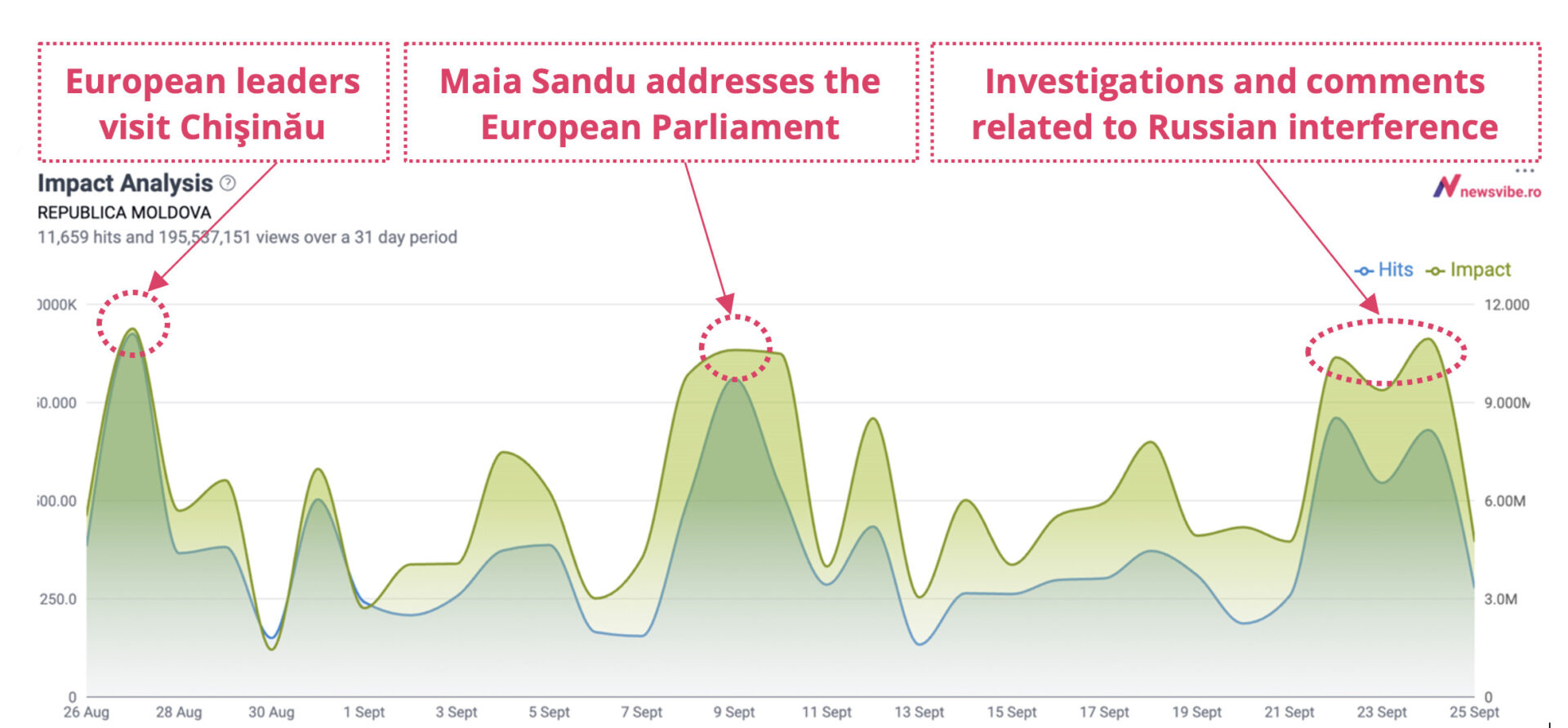
Content sources
The digital sources that stood out for producing online content about the Republic of Moldova are the platforms Evenimentul Zilei (EVZ.ro), Adevărul, and G4Media, each surpassing the threshold of 200 mentions during the analyzed period.
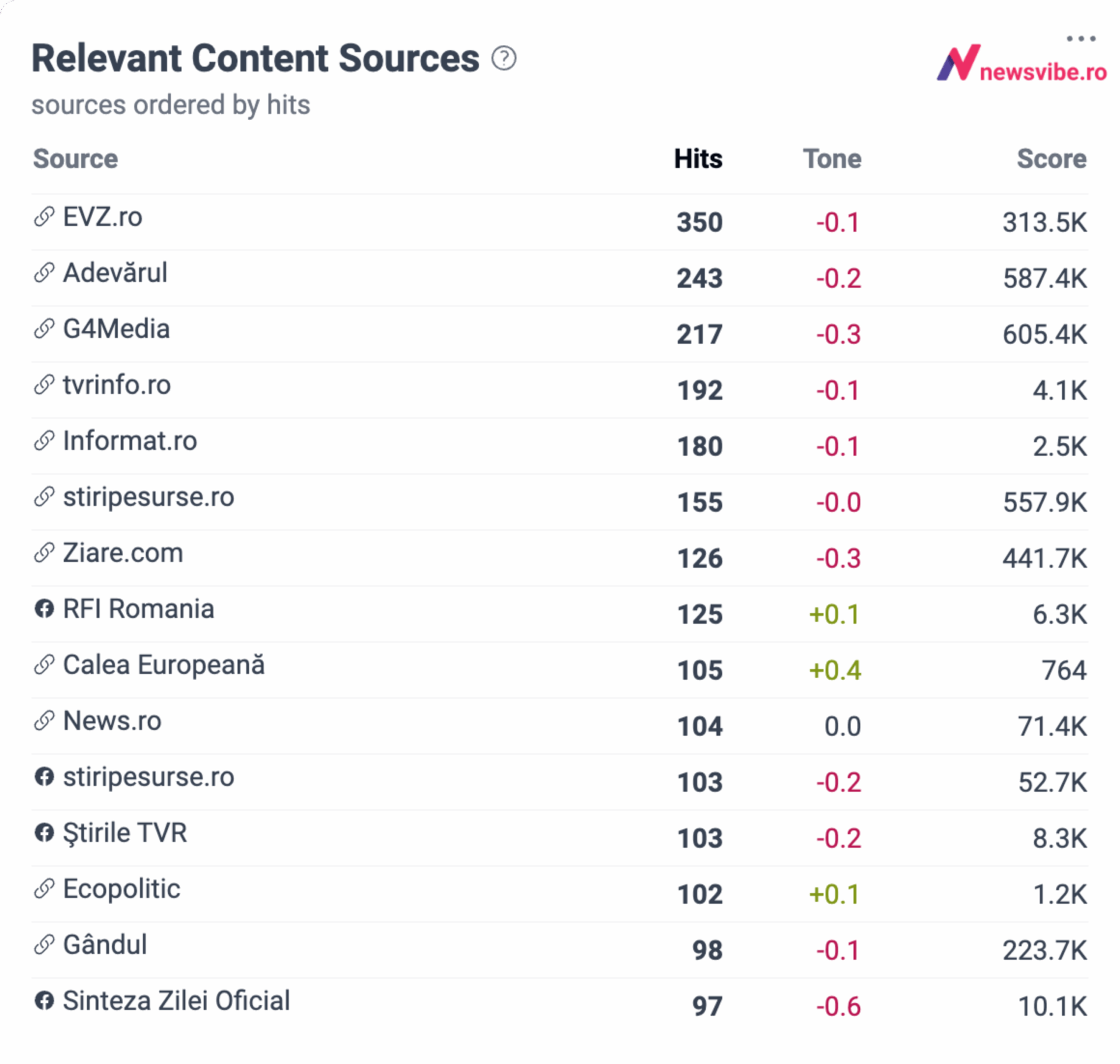
The emotional barometer of the public debate
The SENTIMENT ANALYSIS of the overall debate addresses two key questions.
- First, “How heated is the discussion?”: the pre-election debate has so far been more informative in nature, given that nearly two-thirds (65%) of the content is neutral and factual.
- Second, “Which way does the balance tilt?”: within the segment classified as emotional, the discussion is polarized, with the balance between positive tone (16%) and negative tone (18%) being almost perfectly even, as pro and contra opinions are expressed in comparable volumes.
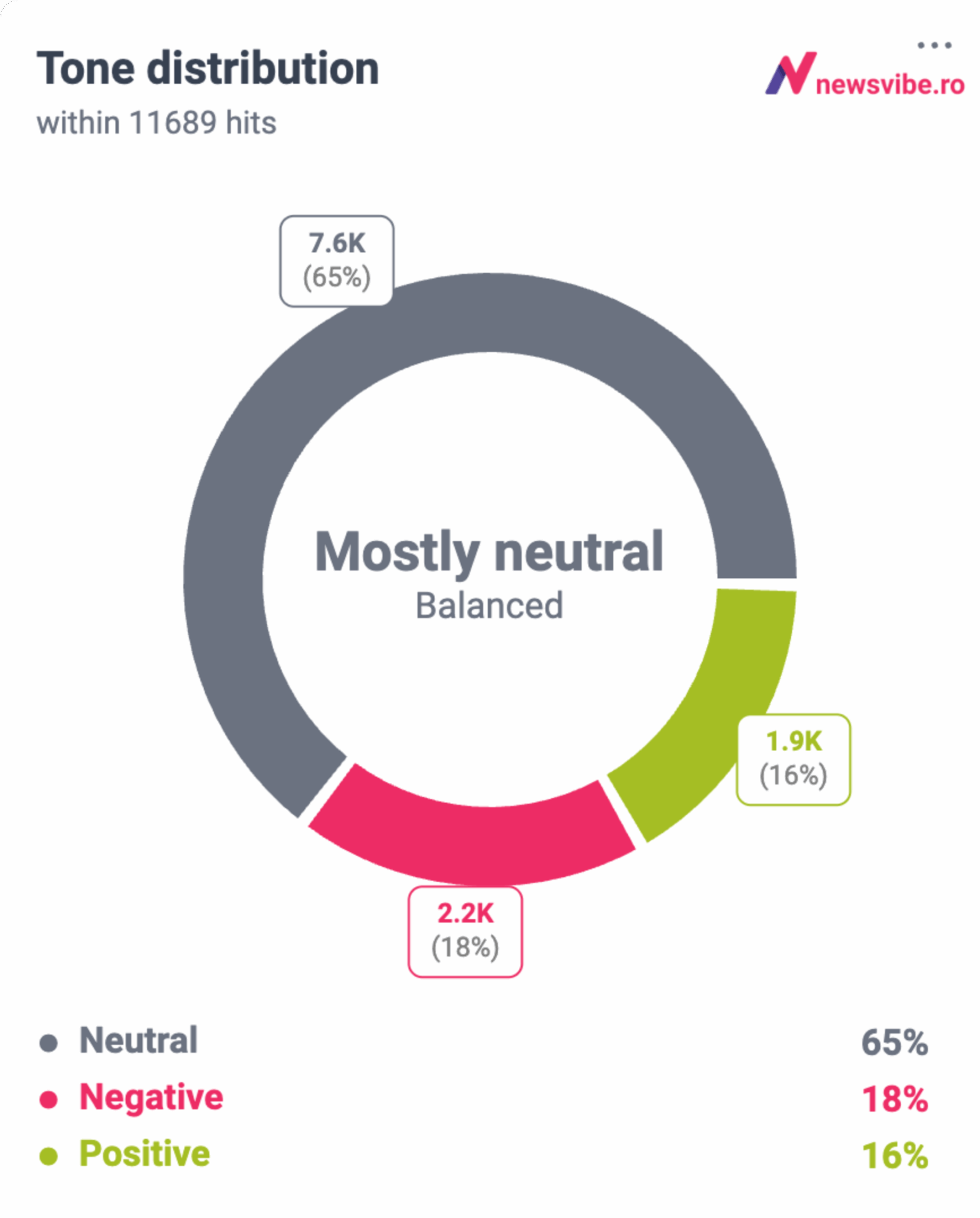
Which camps are driving the public discourse? A detailed analysis of the SENTIMENT DRIVERS – the polarized names shaping the debate – reveals a clear division of perceptions, outlining two distinct narrative camps.
- On one side, the main negative sentiment vector is Russia, accompanied by related terms such as Moscow, the Russian Federation, the Kremlin, Putin, and the KGB. Moldovan political figures like Ilan Șor and Vladimir Plahotniuc are also associated with negative connotations.
- On the opposite side, the positively reflected camp is built around the pro-European trajectory. Here, President Maia Sandu stands out, with a ratio of nearly 3 to 1 in favor of positive mentions compared to negative ones. Alongside her, Romania and the European Union/Europe are highlighted as entities with a favorable image, further reinforced by the (secondary) presence of European leaders Emmanuel Macron, Donald Tusk, and Friedrich Merz, who were also reflected positively in the context of their visit to Chișinău.
- Romanian political leaders were also mentioned in mixed contexts, with a slightly positive leaning for Nicușor Dan and a clearly negative one for George Simion.
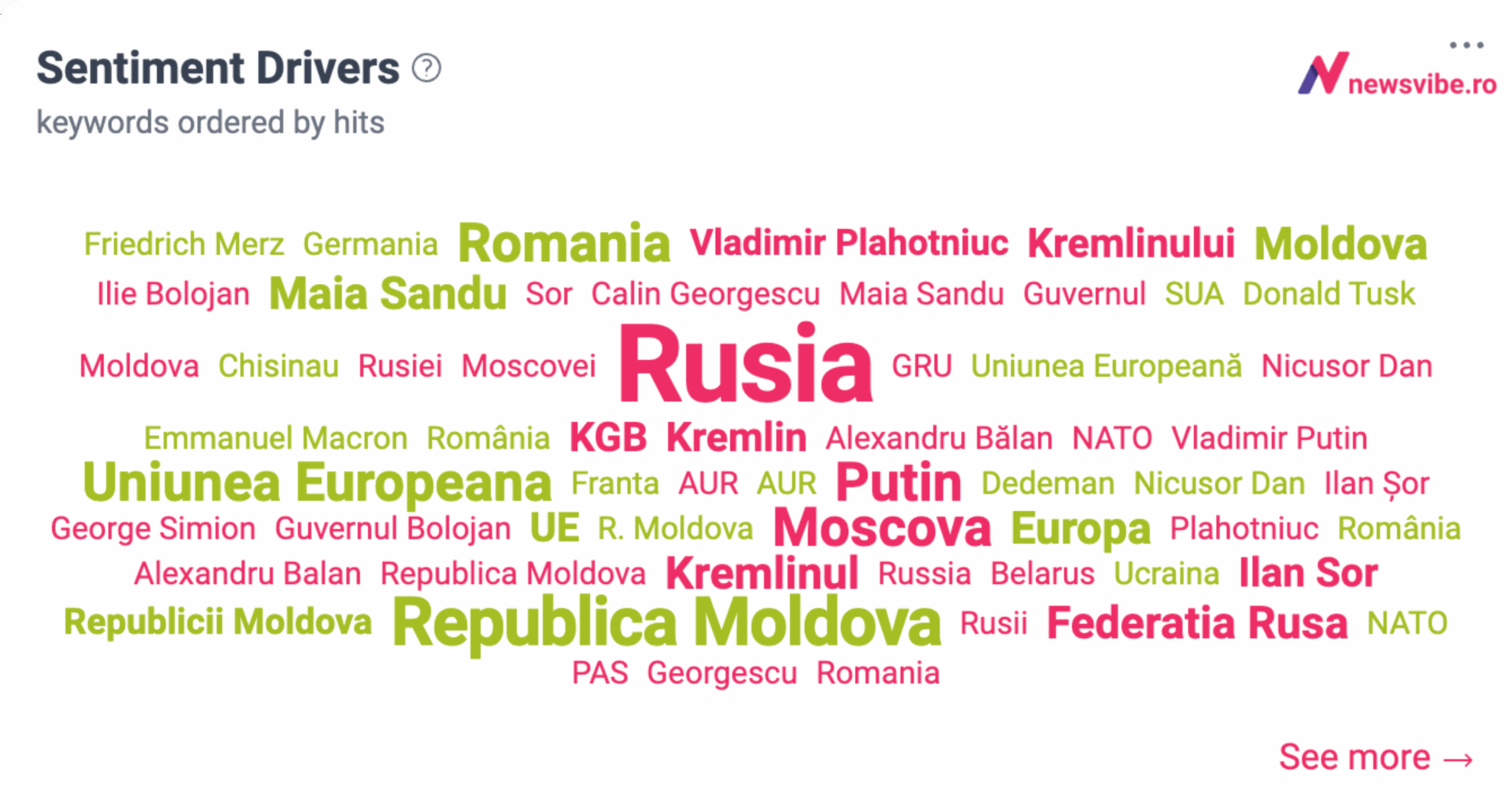
The semantic map of the conversation
To understand the architecture of a public debate, SEMANTIC NETWORK ANALYSIS provides a structural perspective with strong explanatory power. Through this method, key entities (political leaders, institutions, countries) are visually mapped as nodes within a network, while the connections between them reveal the actual structure of the conversation.
Applied to the topic of the Republic of Moldova, this discourse map clearly highlights discussion clusters, central actors and narrative alliances among themes, outlining four central segments of the debate:
-
The Republic of Moldova – Romania relationship, with high visibility for political actors (Maia Sandu, Ilie Bolojan, Nicușor Dan) and the capitals Chișinău and Bucharest.
-
The geopolitical context, with frequent references to Russia and Ukraine, as well as to the EU.
-
The visit of European leaders to Chișinău, with extensive visibility for Macron, Merz and Tusk and their respective countries (France, Germany, Poland), as well as for the European Union.
-
Judicial developments, focusing on Vladimir Plahotniuc’s case and the indictment of a Moldovan spy by DIICOT.
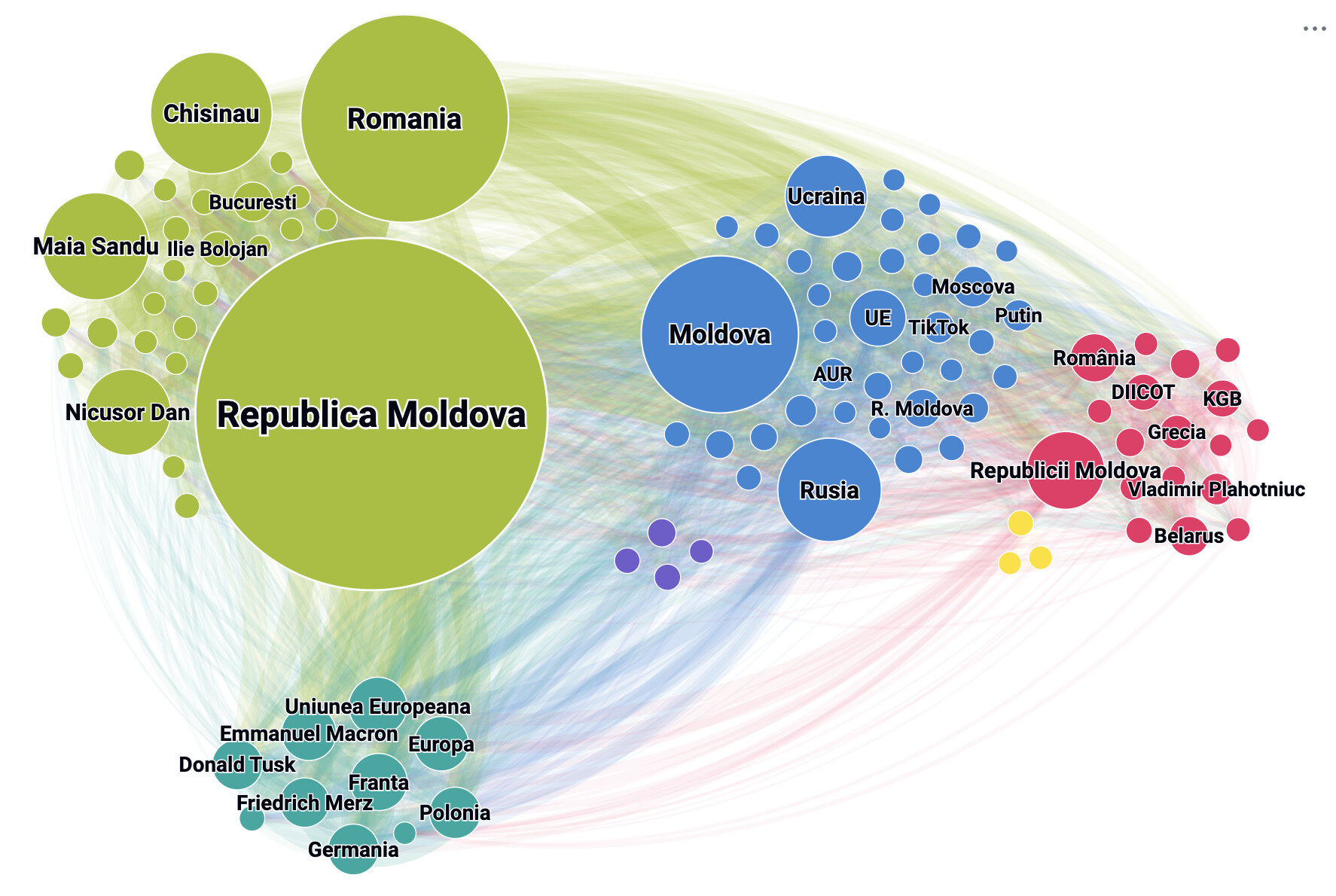
The geographic distribution of media interest
From a REGIONAL INTEREST perspective, we see a significantly higher level of content published about the Republic of Moldova by local sources in the northeastern counties (particularly Iași, Neamț, Suceava), the northwestern region (Bistrița-Năsăud, Maramureș, Bihor, Cluj), as well as in central Romania (Sibiu).
In southern Romania (with the exception of Bucharest), considerably less digital content is produced about Moldova!
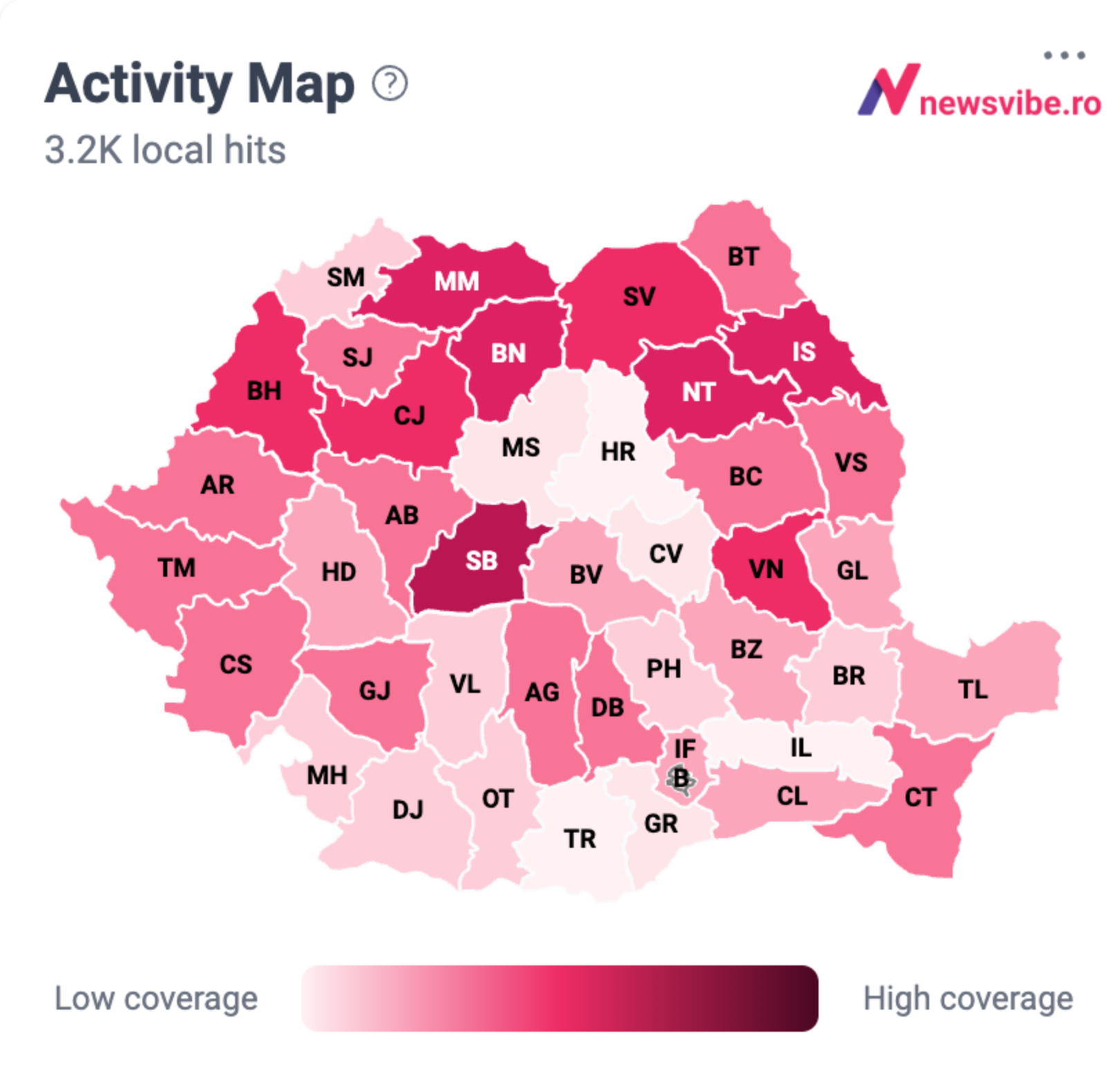
Beyond closely monitoring the content published in online and social media, users can look past the background noise.
They can access an analysis of the overall TONE as well as the SENTIMENT attached to each individual entity.
They can determine whether a conversation is POLARIZED (as in the case of Moldova) or not.
They can identify which SOURCES drive the conversation upward and what relationships exist between topics.
The NewsVibe analytical engine, powered by advanced data structuring and analysis algorithms, generates – on any analyzed public topic – an intuitive map of narrative alliances and vectors of influence (sources, lists of sources, topics), which is crucial for correctly understanding the real stakes of public discourse.
